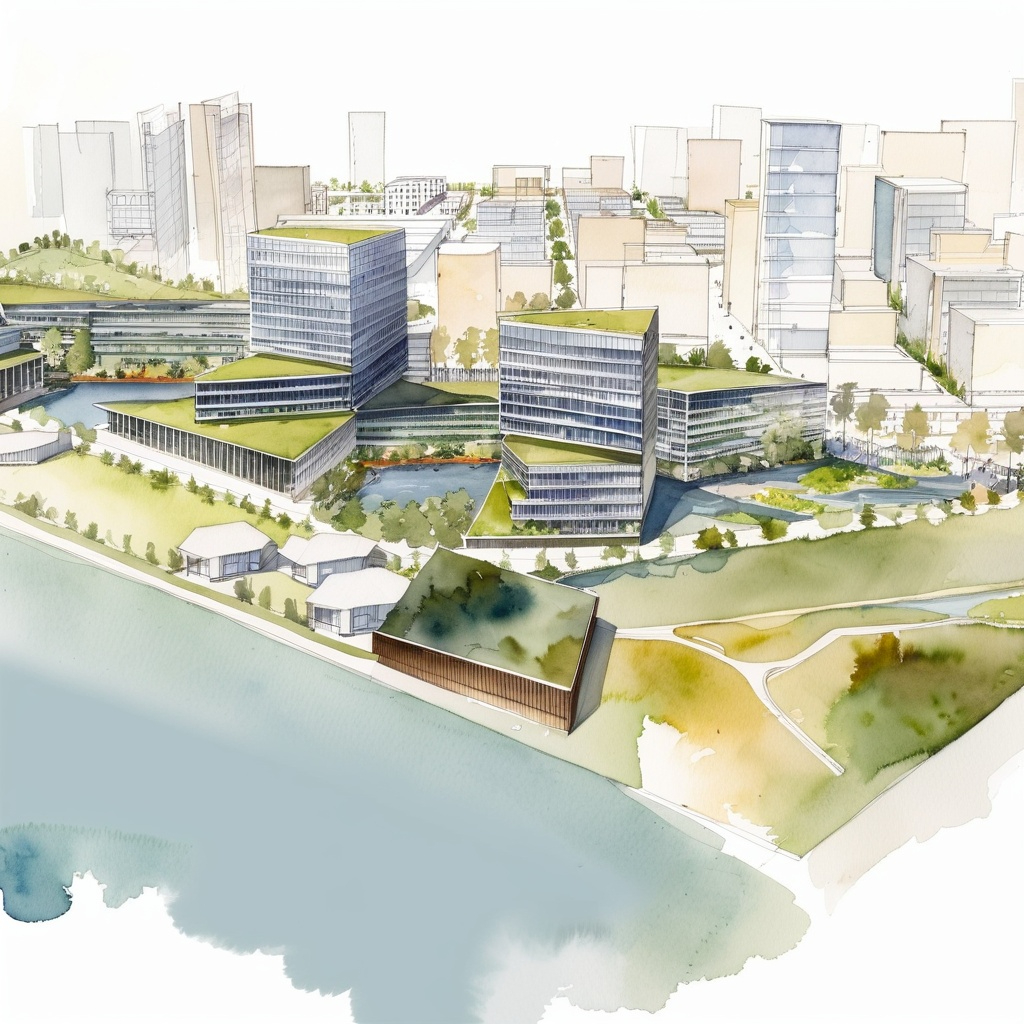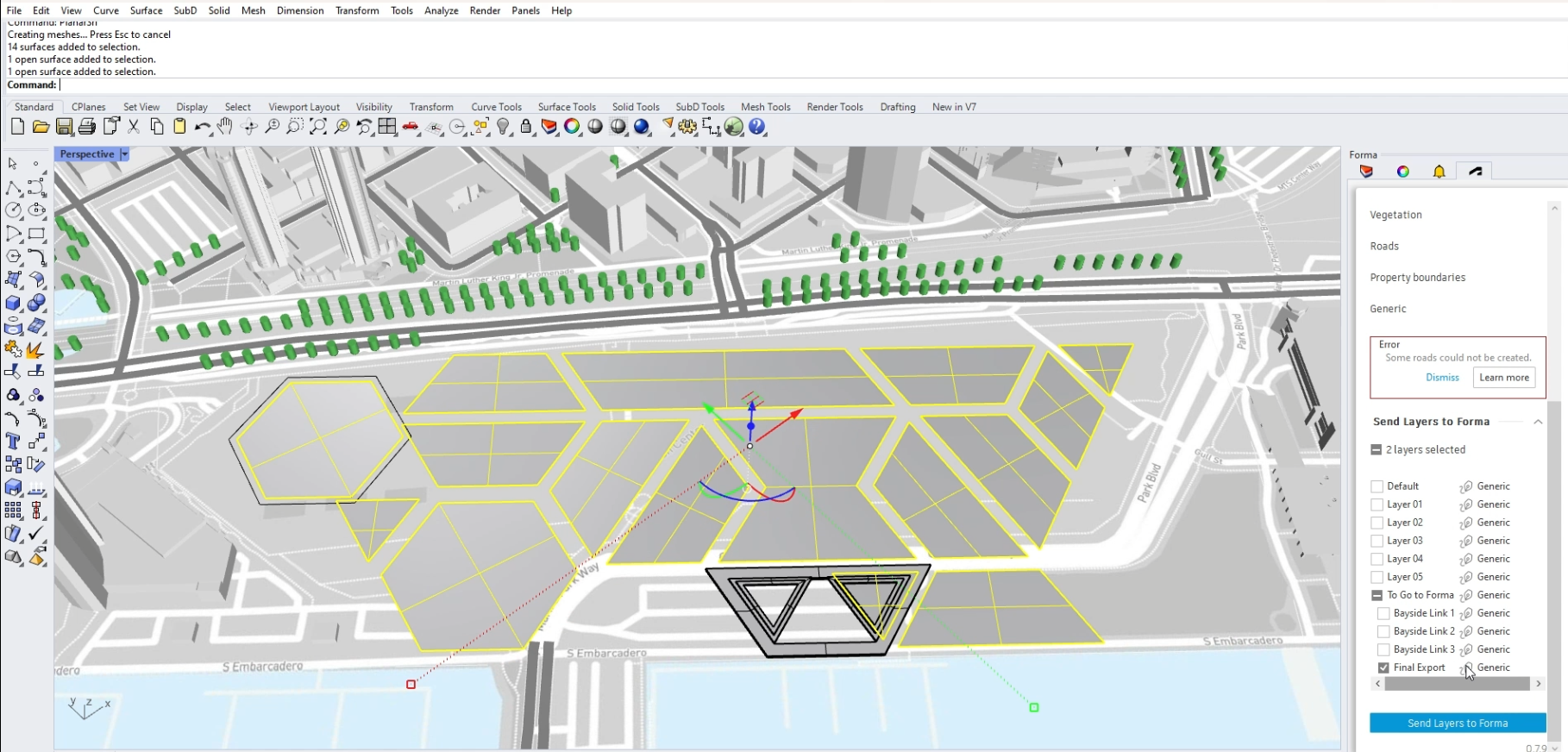Autodesk Forma Competition
Bayside Barrio: A Distinct Development
Oct. 2024
A dense, pedestrian-focused neighborhood in the San Diego Bay, designed for long-term sustainability.
Post-Competition Reflections
Although I didn’t place, I’m quite happy with my submission. I believe that, in the time I had, I created a unique and dynamic response to a very open design prompt, and supported it with strong, personal storytelling. That said, there is a great deal on which to improve:Assessing My...
Workflow within Forma:
- The board is a pretty flexible space, and I believe I used it well to accumulate research and do simple mapping exercises.
- It took me a long time to get a decent workflow between programming and massing, as I got caught up in the details of specific proposals. In the future, I’d like to focus on more round-over-round iteration before diving into the specificities of grid layout, building typology, etc.
- The comparative analysis tool is a powerful one, and while I used it to make some important design decisions it ultimately took a bit of a backseat to my more natural value-driven process. I could improve on this by giving myself more stopping points along to way to assess what I’m doing and why I’m doing it.




Workflow between Forma and Rhino:
- Although it is in principle easy to move geometry back and forth between the programs, I found myself frustrated with how frequently I had to fully restart Rhino in order to revalidate the project link. “Unable to access this data” became a bit of a nightmare phrase to see. A simple barrier like this can be a serious interruption in the middle of a “flow state”.
-
I spent a while getting my feet back under me in
a variety of Grasshopper workflows as part of the façade generator, which in
the end played an extremely minor role in the project. Had I saved this step to
the end rather than worked on it concurrently with the development in Forma, I
may have been more efficient in this effort.
![]()
![]()
Overall Design Approach:
-
In developing the site buildings themselves, I followed an
approach of analysis>programming>massing>shaping. This is pretty
straightforward and got me from an empty lot to a well-developed site. For
better and for worse, this framework constrained the creation of my project to
an overall very linear process, and made it more difficult for me to implement more
significant changes to the project following analyses.
- While Forma does have the potential to show high-fidelity models through its 3D sketch feature as well as by importing more detailed geometries from external programs, its strength lies in the ability to rapidly create multiple proposals, compare them with a number of analytic tools, and then revise those proposals. Had I approached the project with this understanding, I would have been more iterative and less linearly progressive in my approach, and I believe created a more coherent, flushed-out design in the same amount of time.


